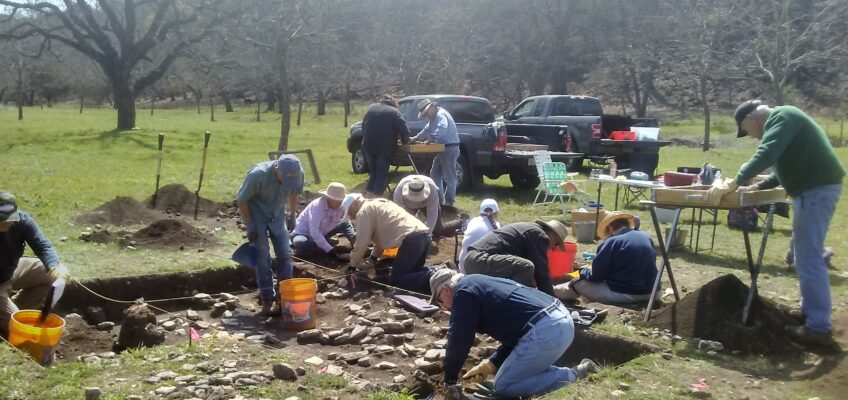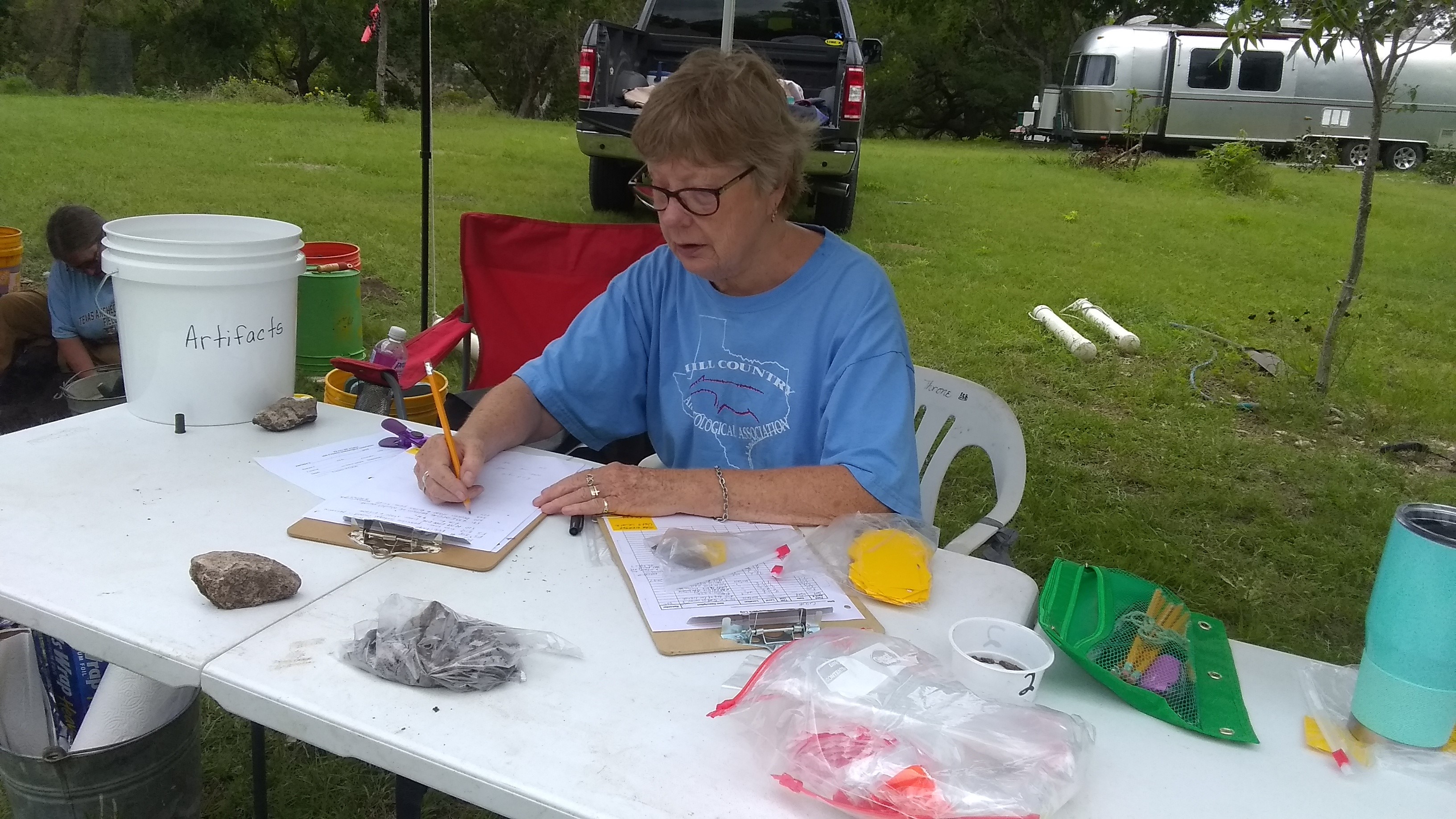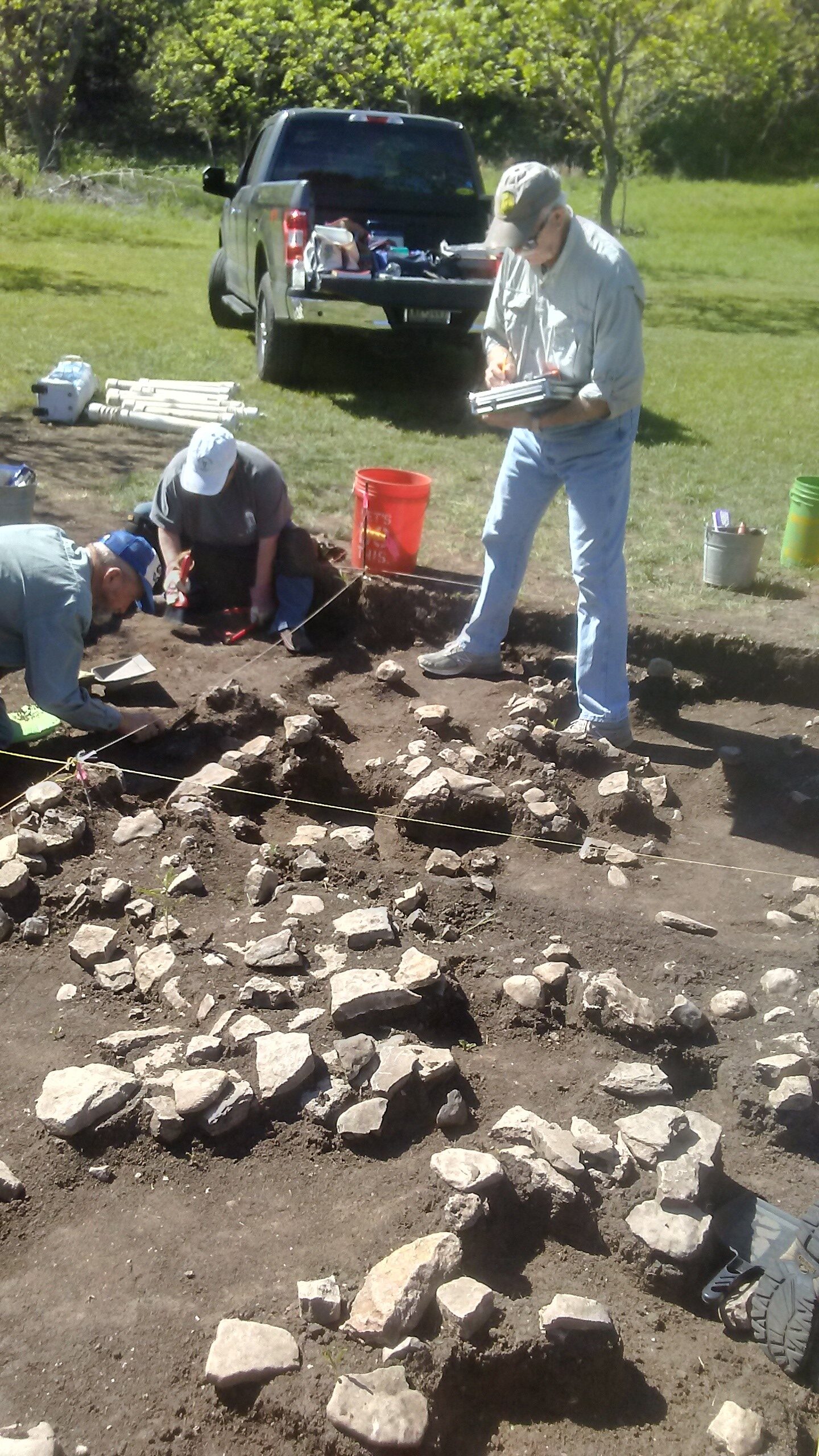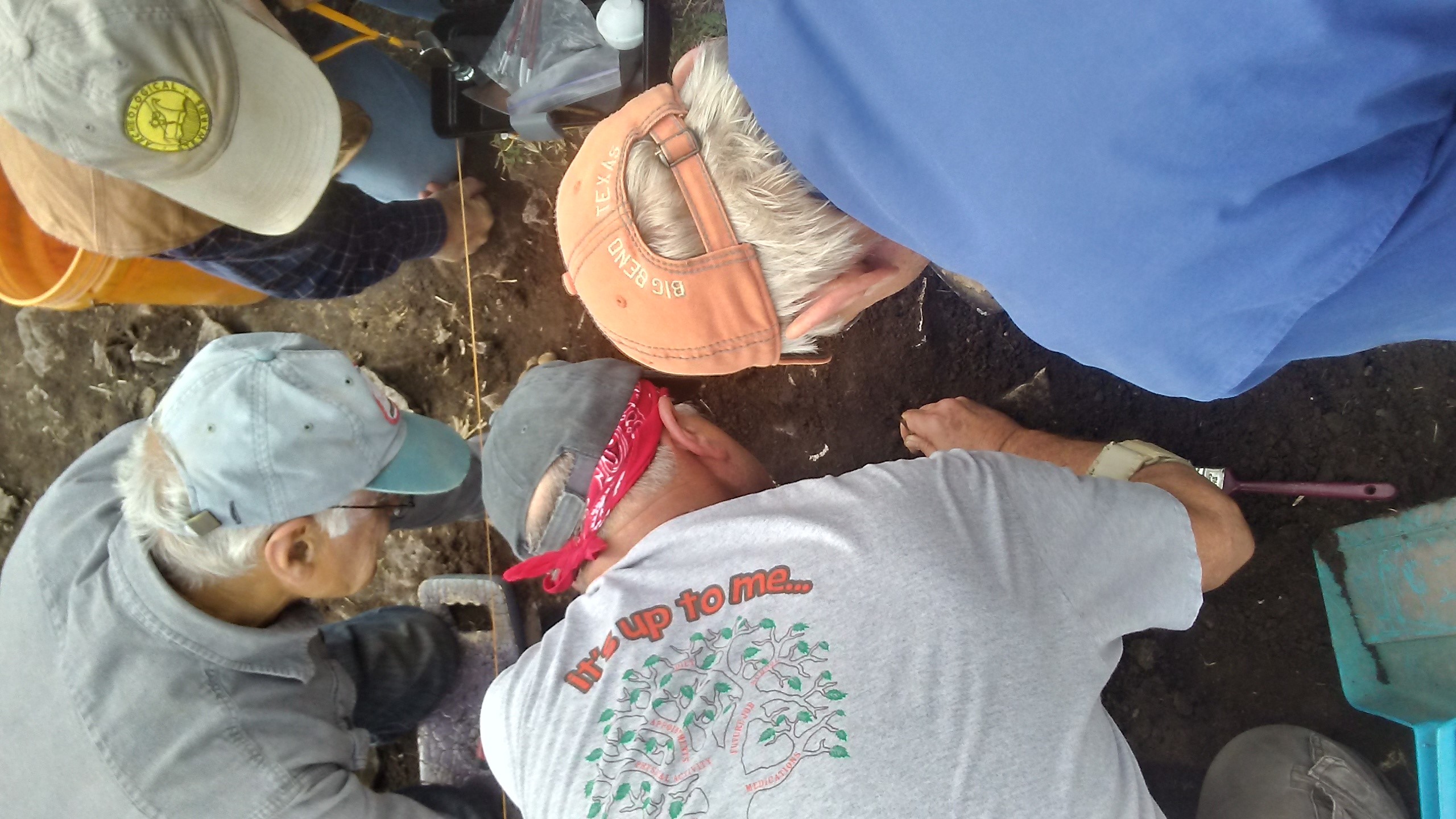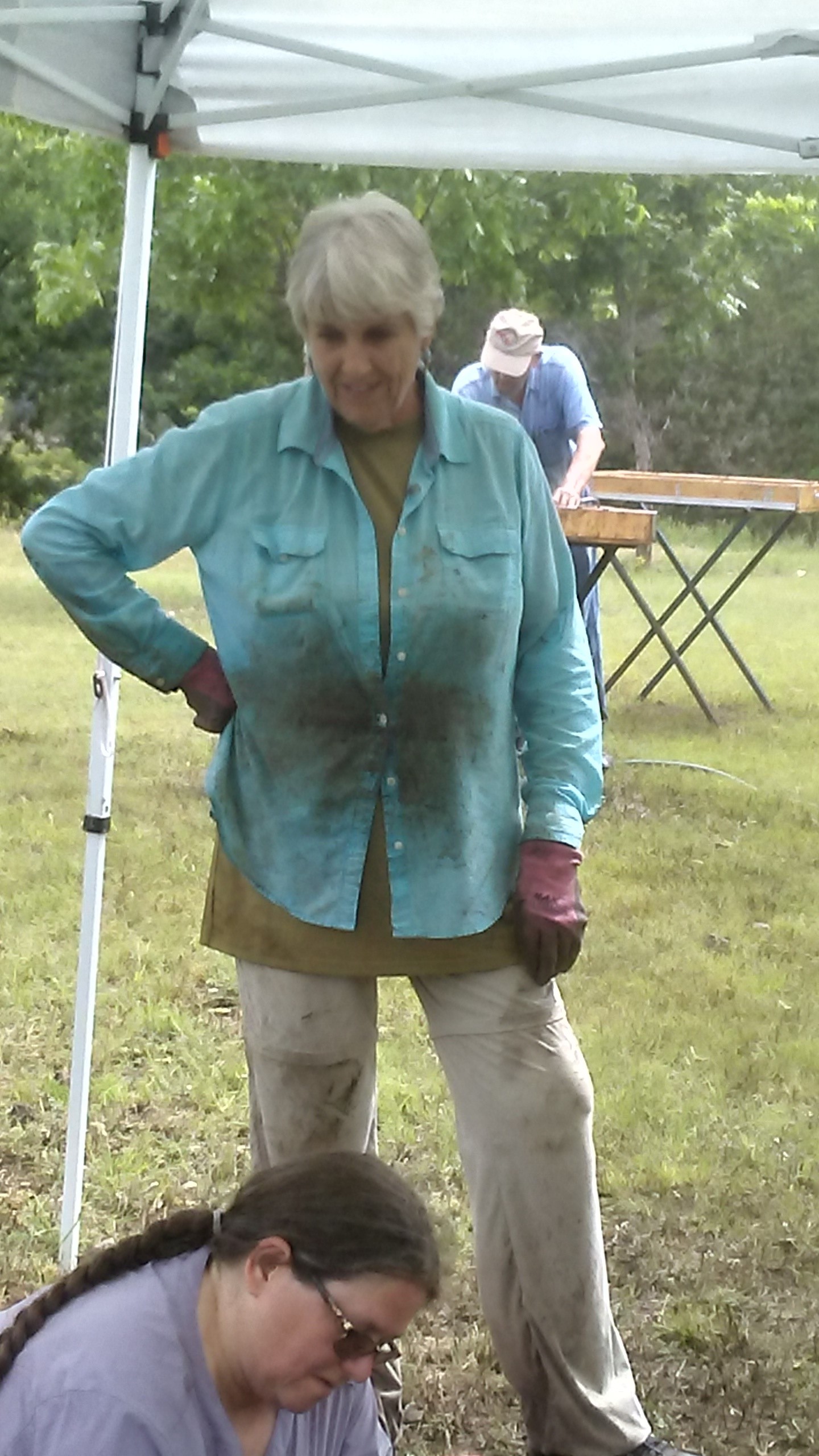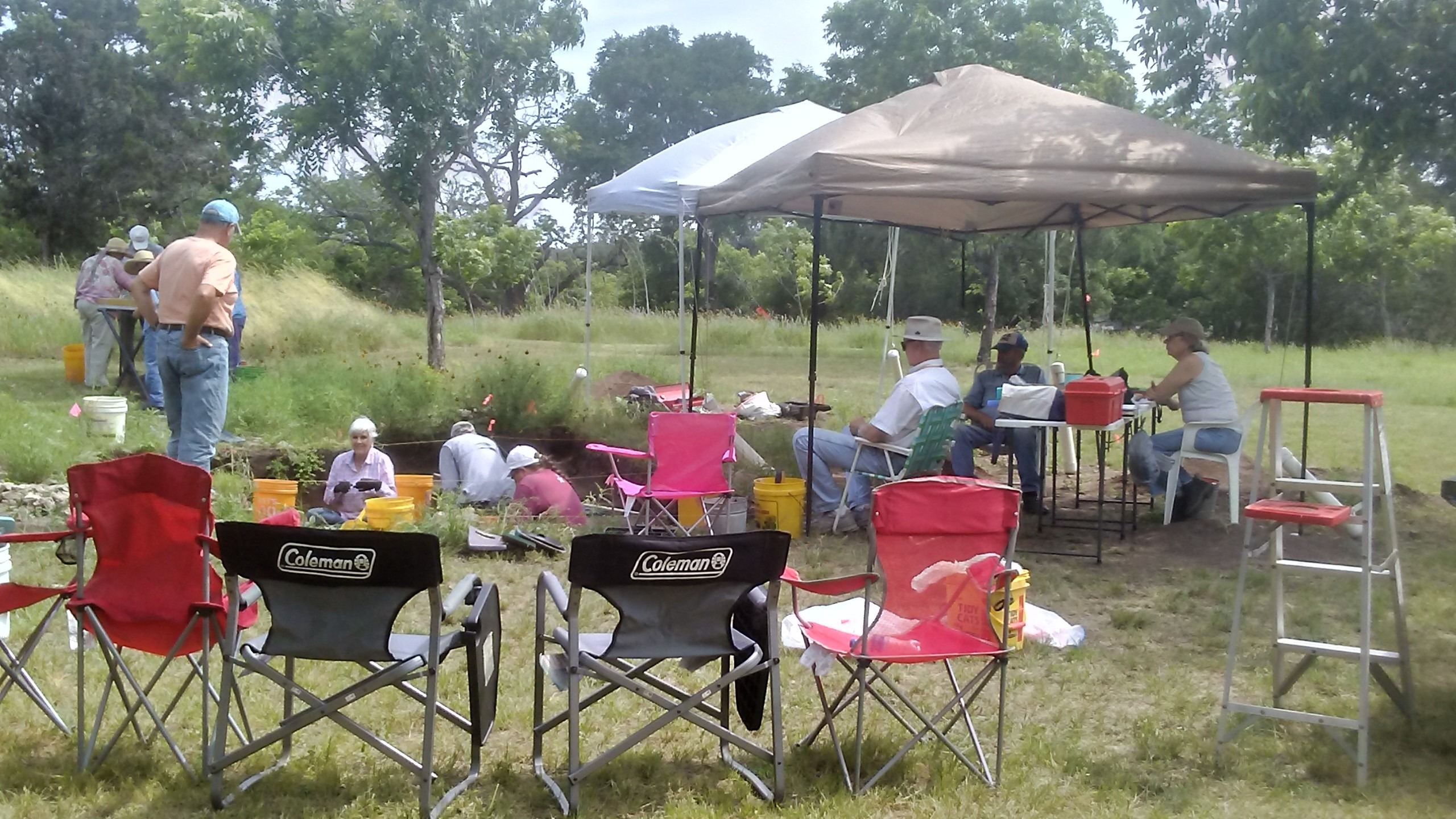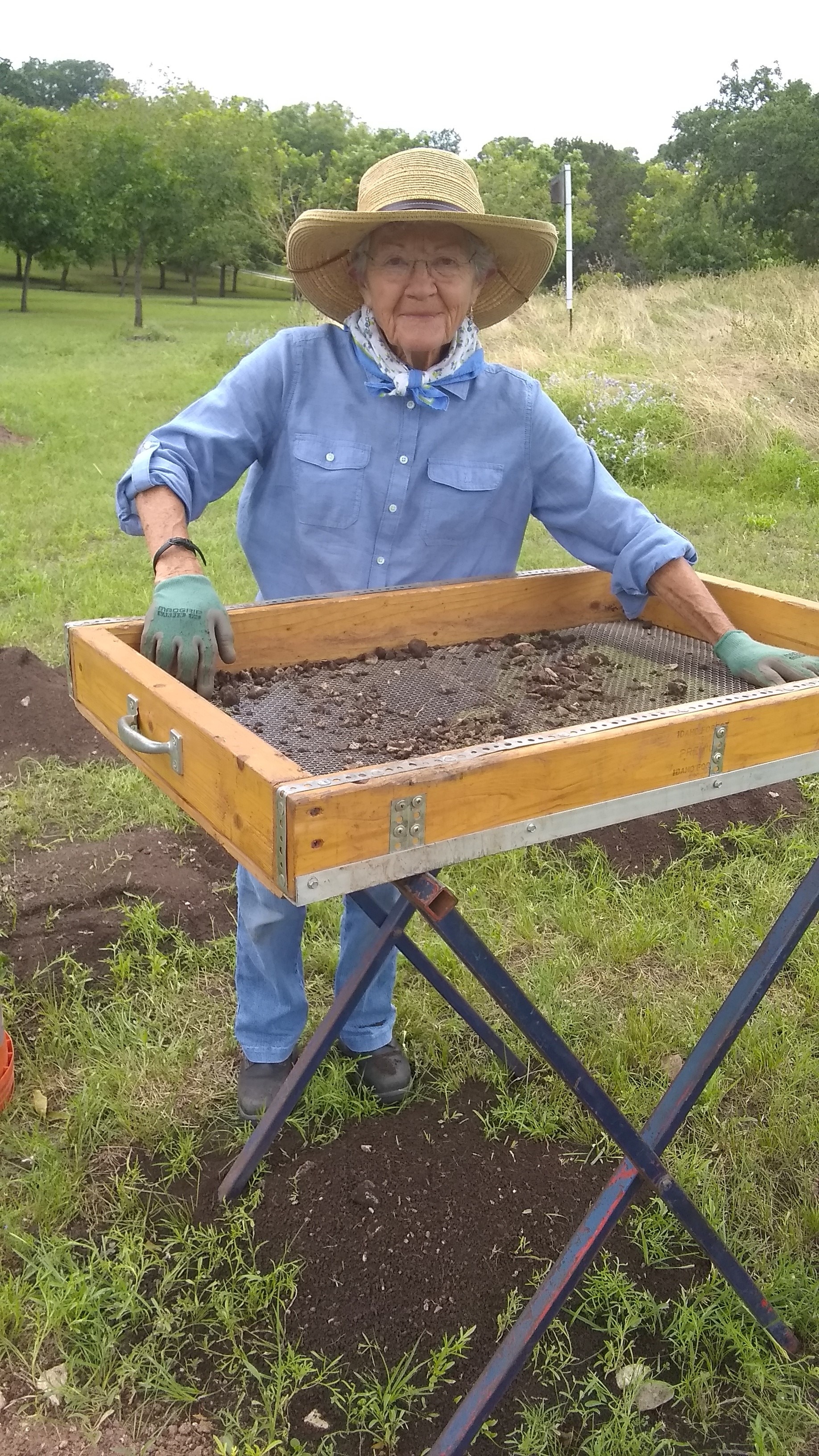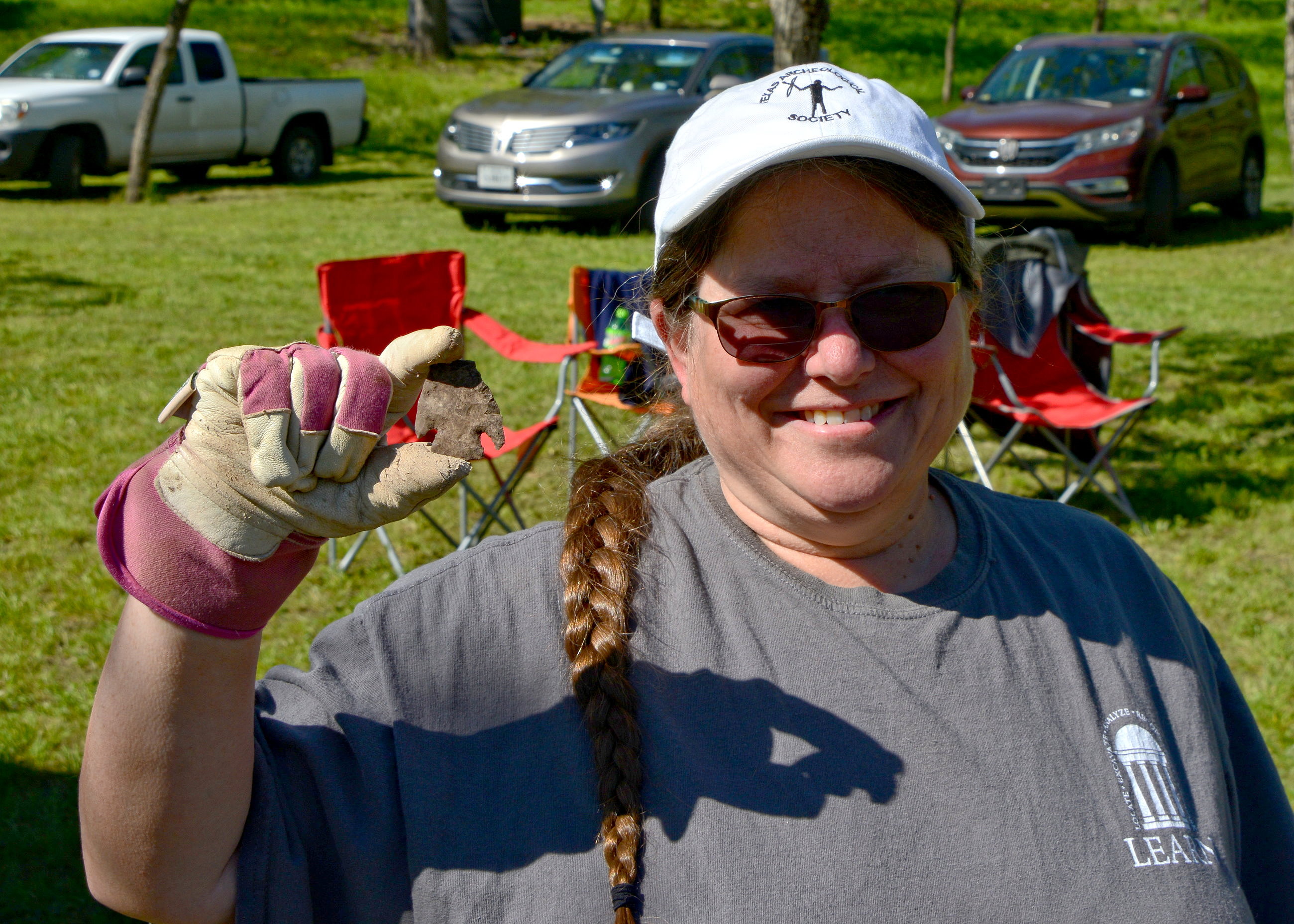CWR Prehistoric Project—41KR754 (December 2018 through early August 2019)
Submitted by: Françoise Wilson, Principal Archeologist
In mid-July of 2018, Marvin Gohlke, Jr., and Craig Mangham performed an initial survey at CWR, a privately-owned ranch in west Kerr County, at the request of the ranch’s owner. In December of the same year, HCAA crew members began to perform hand excavations at CWR. Since then we’ve uncovered a remarkably rich trove of artifacts, tools, bones, mussel shells, ochre, charcoal, and items that are not normally sourced in the area, such as obsidian, several quartz flakes up to 3 cm in diameter, and pottery shards, including four Caddo pottery pieces featuring a characteristic fingernail imprint design.
The area of excavations is located on a gently sloping river terrace of the Guadalupe River. The entire southern side of 41KR754 is bordered by a bluff varying from 20-40 ft. in height. To the east of this area a second site, 41KR755, is in a small canyon feeding into the Guadalupe. This site includes a rock shelter with a midden; it has had minimal investigation to date. There are two visible Fire Cracked Rock (FCR) middens in the main area of site 41KR754, which had obviously been a large occupation area.
Excavations to date have yielded discrete FCR hearths in this same area. Additionally, the surface within the area contains scattered FCR and chert lithics. In addition to the lithics there has been a plethora of bison bones recovered in context, including an astragalus, calcaneum, fragments of mandibles, teeth, and many fragments of leg bones. Deer, possible turkey, and small mammal bones, along with a canid—dog or wolf—are also represented here.
Among the dart points that have been recovered are Martindale, Bulverde, Pedernales, Castroville, Montell, Shumla, Marcos, Marshall, Edgewood and Frio. Arrow points include Edwards, Perdiz, Scallorn and Sabinal. There is an impressive number of complete or nearly complete dart and arrow points.
Tools retrieved from excavation and in context include a corner-tang biface, gravers, perforators, spoke shaves and various scrapers. Two incised stone/shaft straighteners have been uncovered, as have countless bifaces, many demonstrating usewear. Most flakes are late stage reduction, with many also indicating usewear and worked edges. Only a few cores have been uncovered.
The two obsidian flakes have been identified as having come from a source in Malad, ID. The original obsidian work pieces would have been transported over 1,200 miles via extensive trade networks in ancient times.
Most recently excavations yielded a broken St. Mary’s Hall dart point in a separate terrace, which is of the Pleistocene Age. Additional investigation in this terrace area have yielded other broken possible Paleo-Indian points.
At this time diagnostic dart and arrow points give this site a temporal span of mid-Paleo-Indian, about 10,000 years ago, to Late Prehistoric, about 800 years ago.

